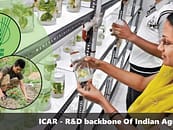Kubernetes translates to “helmsman” or “pilot” in Greek, and it is more popularly known as K8’S or Kube. Kubernetes is an open-source platform, meaning the software can be used, distributed, studied, and changed by the public. It is used to manage containerized workloads and services. Container platforms are software solutions that allow you to manage containerized applications, Docker being a popular choice.
Applications were initially run on physical servers; this was known as the “traditional deployment era.” Resource allocation suffered, resulting in the underperformance of machines. As a solution to this, virtualization was introduced. Multiple virtual machines could be run on a single physical server. This was known as the “virtualized deployment era.” We are currently in the “container deployment era” where applications are run on a single server, but there is relaxation in isolation. This enables multiple applications to share the same Operating System (OS), making the system lighter.
Applications are now being broken down into smaller parts called “microservices” so that each part can be easily manipulated to reach a better version. Kubernetes also helps in the deployment, management, and scaling of these various parts.
The need for an Open Source Platform like Kubernetes
Bundling your applications into a container means that you do not have to launch an entire VM (Virtual Machine) for each application separately. “A container is a standard unit of software that packages up code and all its dependencies so that applications run quickly and reliably from one computing environment to another” containers isolate the software from its environment, making sure it works the same everywhere.
K8’S cluster services help you achieve ‘desired state management. The container host is called a worker and communicates with the cluster services, making up the entire cluster. Each pod, which is the smallest unit of deployment, contains container images. The number of replicas of pods can be chosen. The deployment file is then fed to the API; the cluster service is responsible for scheduling these pods into the environment. If a container fails to function, Kubernetes can replace or kill the said container. This process of generating containers automatically is called “self-healing.”
Use case of Kubernetes Platform in Agriculture
The future of agriculture revolves around complex and compute-heavy applications. To collect real-time data, monitor plants and animals, and even the quality of produce, a large number of applications will be needed. These applications and their surrounding software will require much space as well as energy on virtual machines. It would be a good idea to bundle these applications together. This is where Kubernetes comes in, making the overall system more “lightweight” and ensuring a smoother system’s functioning.
Agriculture as an Industry is sensitive to cost. The industry is going through a massive shift to make its processes more agile, lean, and efficient. This shift is the acceptance of the new age technology, which is a shift from the traditional monolithic application architecture. Once farmers start using various cloud computing applications in their day-to-day functioning, the Kubernetes platform would help maintain these applications and improve the process in the long run. Resources would be conserved, and containers would be able to talk to each other. Other advantages include automatic bin pacing, rollouts and rollbacks, stage orchestration, service delivery, load balancing, self-healing, and secret and configuration management.
The setting up and managing of the Kubernetes software is a skill that takes effort to develop. EKS (Elastic Kubernetes Service) is an offering by AWS (Amazon Web Services), holding an important place in the AWS ecosystem. EKS is becoming increasingly popular as the hassle of installation and maintenance is reduced. The Agriculture Industry will soon adopt upcoming technologies and embrace the newer and technologically superior consuming applications.
The farmer will never know how sophisticated the IT systems are behind the apps they use, but they will marvel at the pace of information processing!
Also, read on our portal, “Budget 2021 provides a long term solution to the inherent problems of agriculture”







